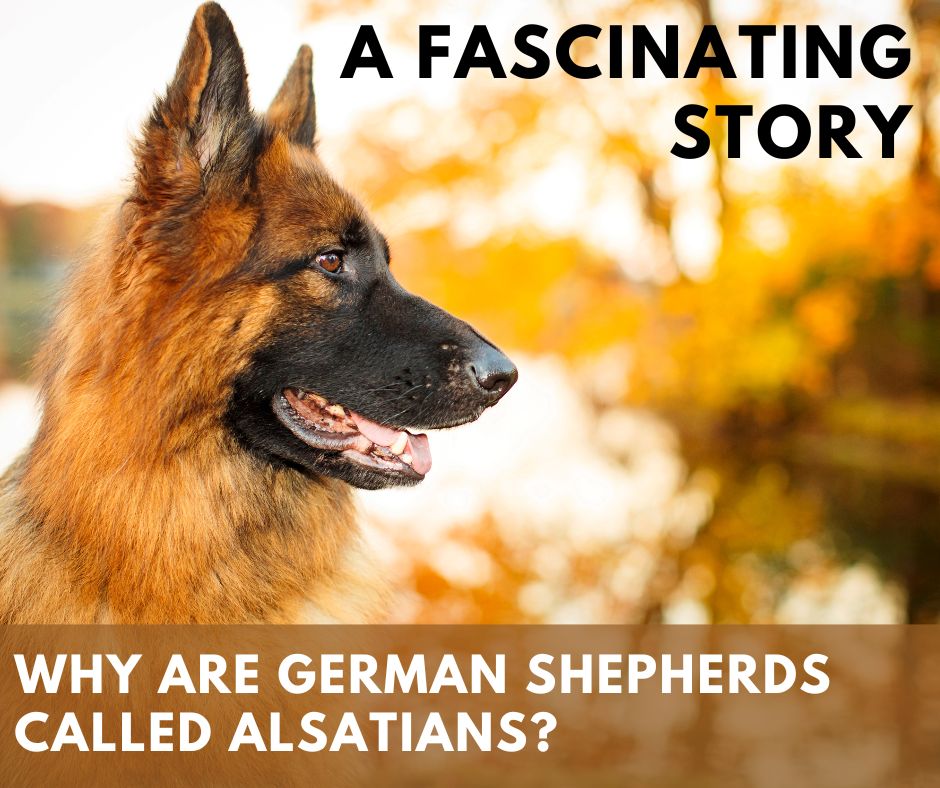Hey there, fellow dog lovers! Have you ever wondered why are German Shepherds called Alsatians? They have been a favourite breed worldwide for many years, but the name “Alsatian” has often cast a shadow of confusion.
Growing up in the UK, the name “Alsatian” is all too familiar to me. I’ve often been out and about with my dogs, only to have them referred to as Alsatians by passersby. I know firsthand just how puzzling it can be.
Is it a different breed? Is it a regional name? Or is there a deeper story behind it? These questions have lingered in the minds of many, and the answers are as fascinating as they are unexpected.
- The Dual Naming Mystery: German Shepherd vs. Alsatian
- A Breed Apart: The German Shepherd’s Rich History and Remarkable Characteristics
- The German Shepherd War Dog: A Hero of World War I
- German Shepherds in World War I: The Origin of the Name “Alsatian”
- The Alsatian Wolf Dog: A Name Rich in Symbolism
- Popularity and Confusion: The Dual Identity of the Alsatian
- The Name Game: FAQs on Why German Shepherds are Called Alsatians?
The Dual Naming Mystery: German Shepherd vs. Alsatian
The story of why German Shepherds are named Alsatians is closely woven into world history, especially the occurrences of World War I. It delves into human emotions, political decisions, and cultural shifts. It’s about a breed that won hearts on the battlefield and then faced a dilemma of identity in a world recovering from the scars of war.
A Journey Through History and Culture
But why does this matter to you? Whether you’re a German Shepherd owner, a history buff, or someone intrigued by the complexities of language and culture, this story offers a unique perspective. It’s not just about a dog breed; it’s about understanding a significant part of our shared human experience.
As we embark on this journey to discover why German Shepherds are called Alsatians, we’ll explore the historical background, their traits and characteristics, the roles these magnificent dogs played in war, the sentiments that drove the name change, and the lasting impact it has had on our perception of this remarkable breed.
So grab a comfortable seat and perhaps a furry companion if you have one as we delve into the captivating world of German Shepherds, or should we say Alsatians. Together, we’ll uncover the facts, dispel the myths, and embrace the legacy of a name that continues to resonate with generations.
A Breed Apart: The German Shepherd’s Rich History and Remarkable Characteristics
The origin of the name “Alsatians” for German Shepherds immerses itself in history, a story that transports us to the early 20th century. It intertwines the breed’s origin, the turmoil-ridden times of World War I, and the cultural sentiments that shaped perceptions. But before we can understand all that, we need to know a little bit about where the German Shepherd came from.
A Shepherd’s Tale: Tracing the German Shepherd’s Journey from Farm to Frontline
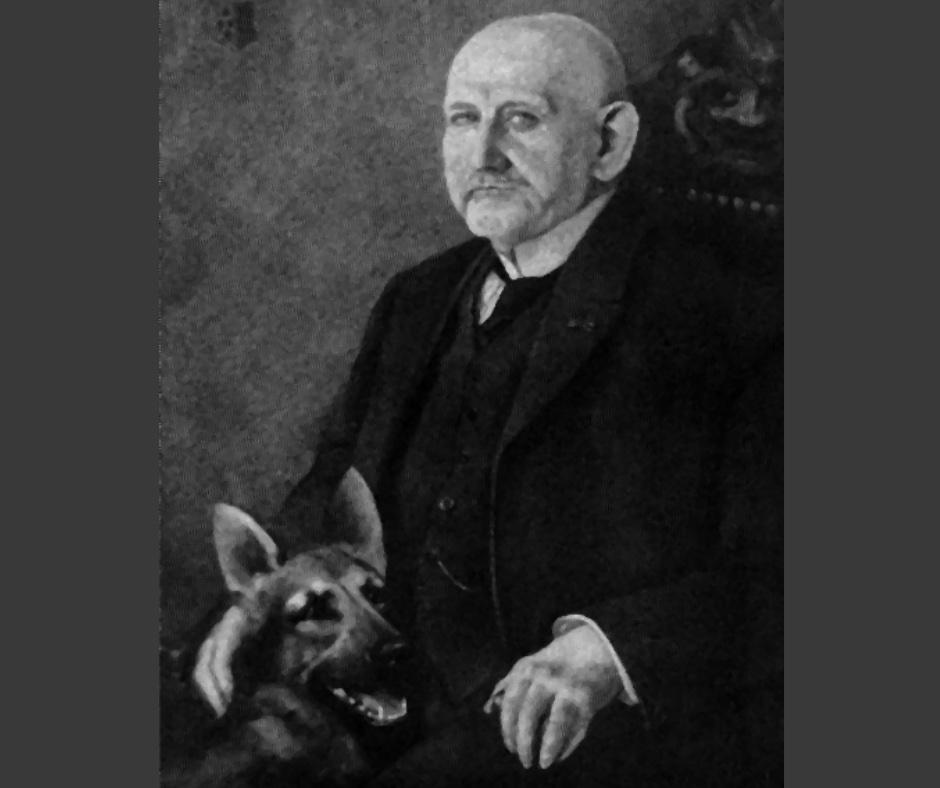
As its name suggests, the German Shepherd has its roots in Germany. Captain Max von Stephanitz, a former German cavalry officer with a vision of a standardised working dog excelling in tasks like herding sheep, primarily drove the breed’s development.
Von Stephanitz’s efforts led to founding of the Verein für Deutsche Schäferhunde, the Society for the German Shepherd Dog, in 1899. That same year, he purchased a dog named Hektor Linksrhein, later renamed Horand von Grafrath, who became the first officially recognised German Shepherd.
The breed was carefully developed by selectively breeding various regional herding and farm dogs from across Germany. The goal was to create a dog with intelligence, strength, loyalty, and a strong work ethic.
These traits made the German Shepherd an exceptional herding dog, capable of managing large flocks with minimal human intervention. This unique combination of characteristics was soon to make them one of the most versatile and beloved dog breeds in the world.
The Traits and Characteristics of German Shepherds: A Breed Shaped for Specific Roles
Summarised below are the key characteristics that define the German Shepherd, capturing the essence of a breed that has won hearts and minds across the globe. From intelligence to loyalty, these traits have shaped the German Shepherd’s roles throughout history, and they continue to make it one of the most sought-after breeds today.
| Intelligence | Ranked among the smartest dog breeds, known for understanding complex commands and tasks. |
| Trainability | Highly trainable, excels in obedience competitions, police work, and search and rescue missions. |
| Strength | Well-proportioned body with strong muscles, suitable for physically demanding roles. |
| Stamina | Capable of sustained physical activity, ideal for herding, pulling sledges, or military service. |
| Loyalty | They are known for unwavering loyalty to their handlers and families, making them excellent guard dogs. |
| Courage | Fearless nature, often used in protection roles and known for bravery in wartime situations. |
| Versatility | Adaptable to various roles and environments, from guiding the visually impaired to comforting those in need. |
| Physical Appearance | Often tan and black or red and black in colour, with a dense double coat and a bushy tail. |
The German Shepherd War Dog: A Hero of World War I
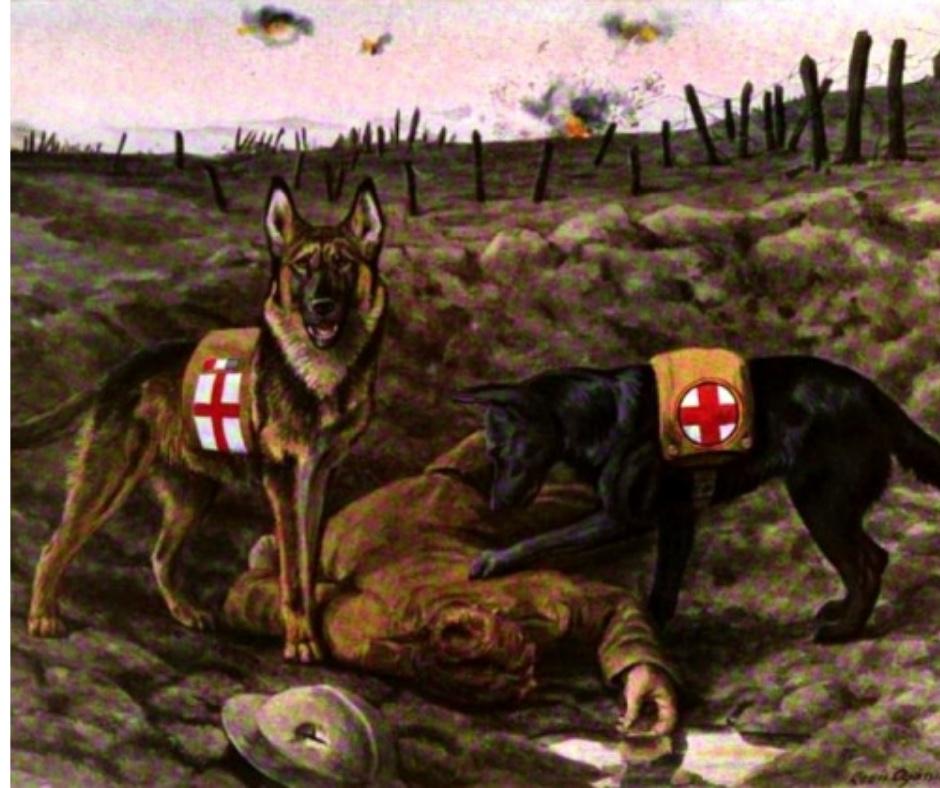
The military quickly noticed these versatile characteristics and promptly enlisted them for various roles on the battlefield.
The German Shepherd’s role as a war dog is a remarkable chapter in the breed’s history, showcasing their versatility, courage, and intelligence. During World War I, these dogs were not merely companions but soldiers, heroes, and lifesavers.
“Dogs played an important military role for most European armies during World War I, serving in a variety of tasks. German Shepherds were among those that hauled machine gun and supply carts, served as messengers, and were trained to locate wounded soldiers on battlefields. They were even used as rat catchers in the trenches, and some, like Rin Tin Tin, found fame after the war. These roles highlight the versatility, intelligence, and courage of the breed, qualities that have contributed to their lasting legacy,”
(Source: National WWI Museum and Memorial)
Versatility on the Battlefield: German Shepherds in Action
German Shepherds were assigned diverse roles and responsibilities in the trenches and battlefields of WWI. Their strength made them ideal for carrying ammunition, their keen sense of smell allowed them to track and locate wounded soldiers, and their intelligence enabled them to deliver messages across the chaotic and dangerous front lines.
They were known as the “German Shepherd War Dogs,” a title that encapsulated their bravery and loyalty. Working directly in the line of fire amidst shelling and explosions, these dogs performed heroic acts under terrifying conditions. Their ability to navigate cratered and waterlogged terrain, often in poor visibility, made them invaluable assets to the soldiers they served.
A Symbol of Bravery: The Legacy of the German Shepherd War Dog
One of the most famous German Shepherds of the time was Rin Tin Tin, a dog rescued by a US pilot. Rin Tin Tin’s story, later immortalised in film, symbolised the breed’s transition from war hero to cultural icon.
But it wasn’t just their physical abilities that made German Shepherds stand out; it was their emotional connection with the soldiers. In the grim reality of war, these dogs provided comfort, companionship, and a sense of normalcy. They were a reminder of home, a connection to humanity amidst the dehumanising horrors of combat.
The allies, having witnessed the effectiveness of these dogs, sought to develop their own German Shepherd programs. The breed’s qualities were too good to ignore, and soon, German Shepherds were being trained and utilised by various military forces.
The legacy of the German Shepherd War Dog is a testament to the breed’s unique combination of physical prowess and emotional intelligence. It’s a story that transcends the boundaries of war, reflecting the timeless bond between humans and dogs.
As we continue to explore why German Shepherds are called Alsatians, we’ll delve into the post-war sentiments and the cultural decisions that led to a name change. But the story of the German Shepherd War Dog remains a poignant reminder of a breed that served with honour, courage, and unwavering loyalty, leaving an indelible mark on history.
German Shepherds in World War I: The Origin of the Name “Alsatian”
Soldiers from both sides witnessed the German Shepherd’s bravery and effectiveness. They served as messengers, ammunition carriers, and even as guides for wounded soldiers. While their heroism garnered admiration, their German origin became a source of contention, particularly in the UK, where anti-German sentiment held sway.
Low Sentiment Towards Germany: The Alsatian’s Name Change
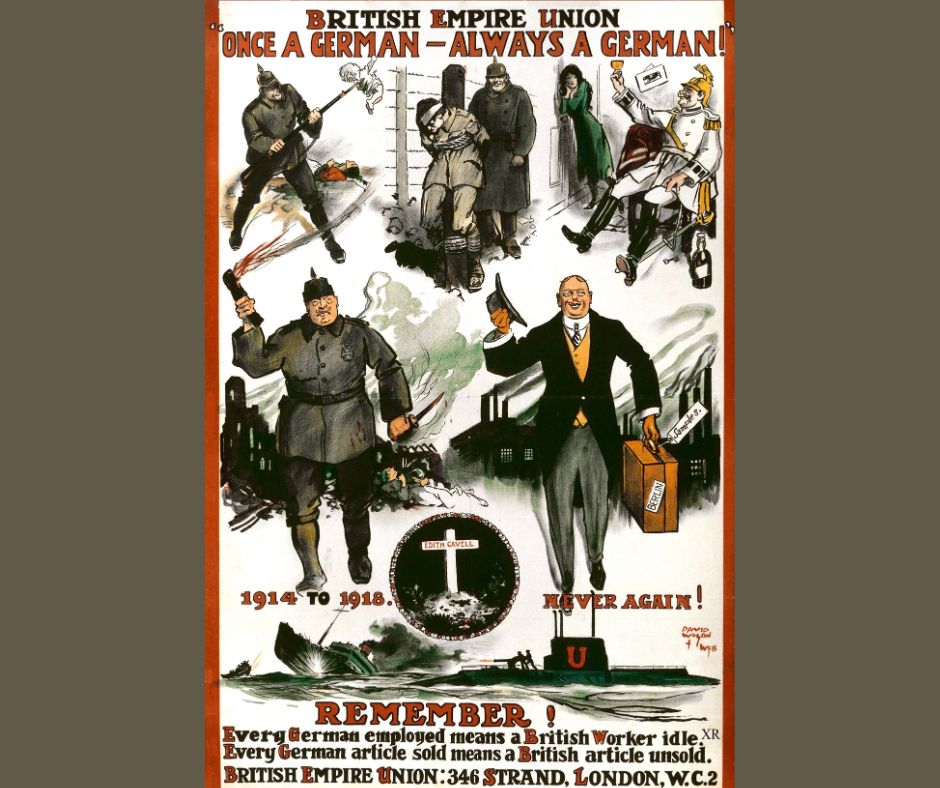
Anti-German sentiment. (2023, August 10). In Wikipedia.
In the aftermath of World War I, the world was a place of deep scars and raw emotions. The conflict had left a lasting impact, not only on the landscape but also on the collective psyche of the nations involved.
In the United Kingdom, in particular, the sentiment towards Germany was one of distrust and resentment. This low sentiment would play a crucial role in renaming the German Shepherd to the Alsatian.
A Name Reflecting the Times: The Birth of the “Alsatian”
Admired for its bravery and service during the war, the German Shepherd was caught in a cultural crossfire. Its association with Germany, the country the allies had been in conflict with, became a problem. The memories of the war were still fresh, and the name “German Shepherd” was a painful reminder of a bitter past.
Even the British monarchy had to distance itself from its German origin, changing its name from Saxe-Coburg and Gotha to Windsor. In this climate of nationalistic fervour, the German Shepherd’s name became too controversial and linked to a nation viewed with suspicion.
The decision to rename the breed to “Alsatian” was not merely a marketing strategy but a reflection of a society grappling with its identity and values. The name “Alsatian,” inspired by the German-French border area of Alsace-Lorraine, was a way to honour the breed’s qualities without invoking the contentious association with Germany.
The Symbolism of a Name: Understanding the “Alsatian”
According to Encyclopedia Britannica’s detailed overview of the German Shepherd breed, this name change was more than a superficial rebranding; it was symbolic of a time when names, origins, and associations carried significant weight. The decision spoke to the complexities of human emotions, political realities, and cultural sensitivities.
The story of why German Shepherds are called Alsatians is, in many ways, a story of how history shapes language and perception. It’s a reminder that words carry meaning beyond their definitions, resonating with the echoes of events, sentiments, and collective memories.
As we continue to explore this fascinating tale, we’ll delve into the original naming as the Alsatian Wolf Dog, the popularity and confusion that followed, and the legacy that endures. The name “Alsatian” is not just a label; it’s a window into a time and a place, a reflection of a world trying to heal and redefine itself.
The Alsatian Wolf Dog: A Name Rich in Symbolism
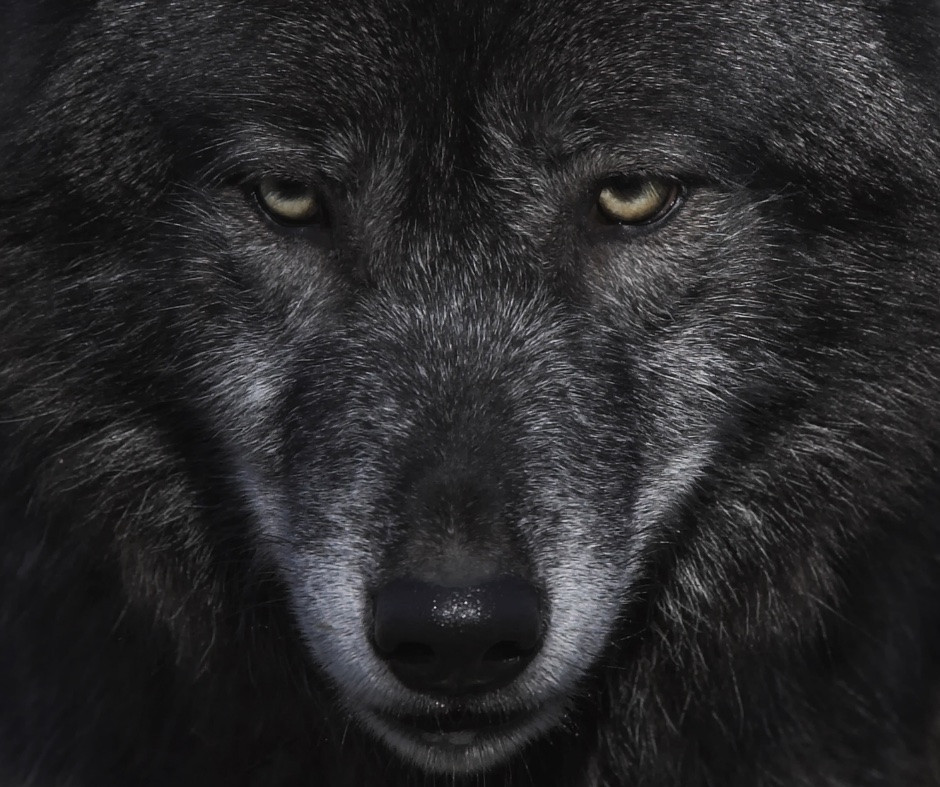
Renaming the German Shepherd to the “Alsatian Wolf Dog” in the United Kingdom was more than a mere change of label; it was a carefully considered decision that sought to honour the breed’s qualities while navigating the complex post-war sentiments.
The Inspiration Behind the Name “Alsatian”
The name “Alsatian” was inspired by the German-French border area of Alsace-Lorraine, a region that had been a focal point of conflict during World War I. This choice was not accidental; it was a symbolic gesture, connecting the breed’s courage and loyalty to a place that had witnessed both struggle and heroism.
But why the addition of “Wolf Dog” to the name? This part of the name was a nod to the breed’s intelligence, strength, and resemblance to wolves. It was an acknowledgement of the wild, primal qualities that made the German Shepherd such an effective war dog.
Controversy and Change: The Evolution of the Name “Alsatian”
However, the “Wolf Dog” tag was not without controversy. Associating a domestic dog with a wild animal is feared by many raised concerns. There was a concern that this connection could evoke apprehension and fear, particularly considering the breed’s size and strength. They decided to omit the “Wolf” component, officially registering the breed as the “Alsatian.”
This renaming was not just a marketing ploy but a reflection of a society trying to reconcile its admiration for a breed with its aversion to its country of origin. It was a delicate balance, an attempt to preserve the dignity and honour of a dog that had served with distinction without invoking the painful memories of war.
According to the American Kennel Club’s comprehensive guide to German Shepherd dogs, the name “Alsatian” would remain the official breed name in the UK until 1977, a testament to the power of names and the emotions they can evoke. It’s a story that speaks to the human ability to adapt, to find new ways to understand and appreciate, even in the shadow of conflict and mistrust.
As we delve deeper into the saga of the German Shepherd and its dual identity as the Alsatian, we’ll look at the popularity, confusion, and legacy that this name change created. The tale of the Alsatian Wolf Dog is a chapter in a larger narrative, a story of resilience, adaptation, and the enduring bond between humans and dogs.
Popularity and Confusion: The Dual Identity of the Alsatian

The renaming of the German Shepherd to the “Alsatian” in the United Kingdom marked the beginning of a new era for the breed—a period filled with popularity, confusion, and a complex identity.
The Rise of the Alsatian: A Favorite Breed in the UK
Under the name “Alsatian,” the breed’s popularity soared. By 1926, the number of registered Alsatians in the UK had grown to over 8,000. The breed’s versatility, intelligence, and loyal nature made it a favourite for various roles, from military and police work to guide dogs and family pets. Even the British Royal family embraced the breed.
However, this popularity came with a side effect: confusion. The dual naming of the breed as “German Shepherd” in most of the world and “Alsatian” in the UK led to misunderstandings and misconceptions. Was it a different breed? Were there variations between German Shepherds and Alsatians? These questions perplexed breeders, buyers, and dog enthusiasts alike.
The Lasting Impact of a Name: Understanding the Alsatian’s Legacy
The confusion extended beyond mere terminology. It affected breeding programs, import and export regulations, and even the perception of the breed. The name “Alsatian” had become so ingrained in British culture that they were starting to be seen as a different breed altogether.
As we continue to explore the multi-faceted journey of the German Shepherd and its alias, the Alsatian, we’ll take a look into the significance behind FCI Standardization and delve into the UK Kennel Club’s decision to return to the name back to “the German Shepherd Dog in 1977.
The FCI Standardisation
The FCI Standardisation is crucial in the German Shepherd dog breed’s history. Their efforts to standardise dog breeds and uphold breed authenticity gained momentum in the mid-20th century.
Established in 1911, the FCI aimed to ensure consistent breed standards across countries, enabling accurate communication about breeds and their attributes. This drive for standardisation led to the reconsideration of the German Shepherd’s name.
The redemption of identity: How German Shepherds reclaimed their true name, leaving Alsatians in the past.
The FCI Standardisation involved thorough research and analysis of the German Shepherd breed’s characteristics, such as appearance, temperament, and working abilities. The aim was to establish a unified breed standard, ensuring that all German Shepherds met the same criteria, regardless of their country of origin.
Implementing the FCI standards allowed breeders and enthusiasts to refer to a global benchmark for the German Shepherd breed. This standardisation fostered consistency in breeding and ensured that German Shepherds worldwide shared similar traits and abilities.
The FCI preserved the integrity and identity of the German Shepherd breed and maintained the admirable qualities, such as intelligence, loyalty, and versatility we all know and love.
Impact on the UK: Reverting to German Shepherd
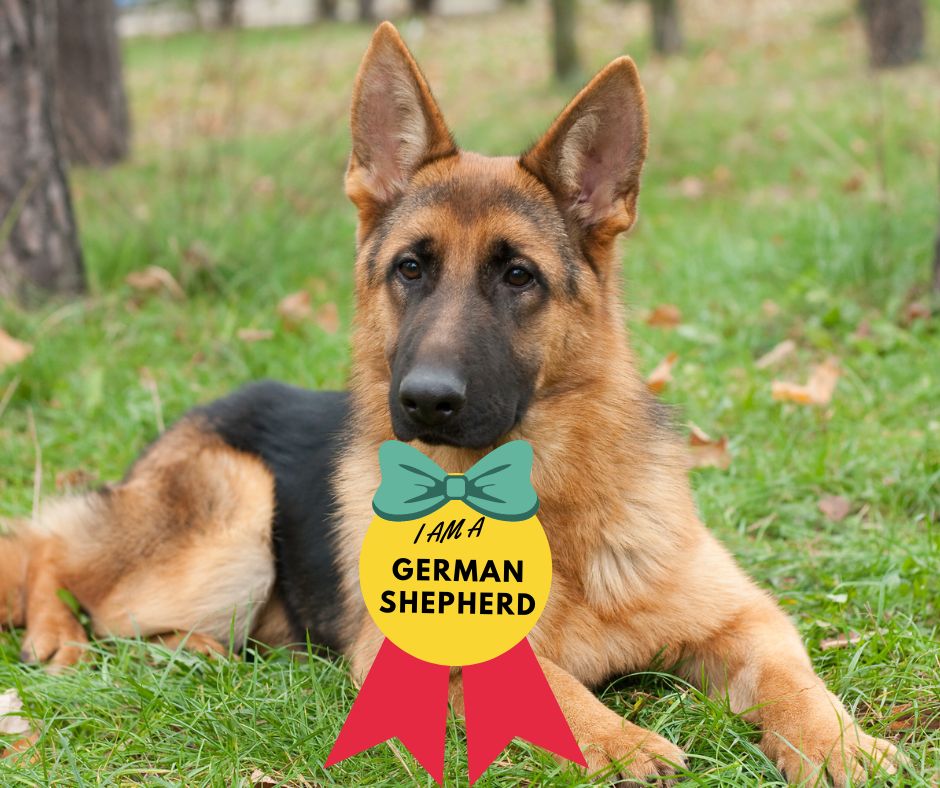
As international recognition and acceptance of FCI standards grew, pressure mounted on the United Kingdom to align with global naming conventions.
In 1977, the British Kennel Club decided to revert to the original name “German Shepherd,” acknowledging the breed’s German heritage. This decision was a testament to FCI’s influence and reflected the evolving attitudes towards Germany after the war.
Significance and Ongoing Relevance
The transition from “Alsatian” to “German Shepherd” was more than just a linguistic shift. It symbolised a reconciliation with history and a recognition of the breed’s true origins.
The FCI’s commitment to standardisation played a pivotal role in this change, fostering a more cohesive global canine community and promoting accurate communication among breed enthusiasts, breeders, and researchers.
To understand the impact of FCI Standardisation, refer to the table below:
| Year | Event |
|---|---|
| 1899 | German Shepherd Breed Officially recognised. |
| 1919 | German Shepherds in the UK were to be known as Alsatians |
| 1977 | FCI publishes the first German Shepherd standard |
| 1977 | The UK changed the name back from Alsatian to the original name German Shepherd |
| 1991 | FCI publishes the current German Shepherd standard |
| 1999 | German Shepherd standard revised by the FCI |
Return to the Name “German Shepherd”
After the FCI standardisation, the German Shepherd breed has returned to its original name, “German Shepherd,” after being called “Alsatians” for some time. This change showcases a desire to preserve the breed’s German heritage and identity, recognising the historical significance of the breed and emphasising its German origins.
Reintroducing the breed’s original name strengthens its association with Germany and solidifies its place in canine history.
German Shepherd enthusiasts, owners, and breeders can now celebrate the breed’s return to its original name, embracing its true identity and celebrating its German lineage.
Let us appreciate and embrace the German Shepherd breed for all its qualities and contributions to the world of dogs.
Unleashing the Legacy: Key Takeaways
Why are German Shepherds Called Alsatians?
- Historical Roots: The name “Alsatian” emerged during World War I due to anti-German sentiment.
- Characteristics and Roles: German Shepherds’ intelligence, loyalty, and versatility have shaped their roles throughout history.
- Naming Confusion: The dual naming has led to confusion and debate, reflecting broader cultural and historical dynamics.
- Lasting Legacy: Whether known as German Shepherds or Alsatians, the breed’s rich history continues to resonate.
The Name Game: FAQs on Why German Shepherds are Called Alsatians?

Why are German Shepherds called Alsatians?
The name “Alsatian” was adopted in the United Kingdom after World War I due to anti-German sentiment. Inspired by the Alsace-Lorraine region, it aimed to create distance between the breed and its German origins.
Are German Shepherds and Alsatians the same breed?
Yes, German Shepherds and Alsatians are the same breed. The name “Alsatian” was used primarily in the UK, while “German Shepherd” was used worldwide.
When did the name change back to German Shepherd in the UK?
The UK officially reverted to the name “German Shepherd” in 1977, although many continued to use the name “Alsatian.
What roles did German Shepherds play in World War I?
During World War I, German Shepherds served as messengers, ammunition carriers, guides for wounded soldiers, and provided comfort and companionship to troops.
Was the name Alsatian Wolf Dog ever used?
Yes, the breed was initially registered as the “Alsatian Wolf Dog” in the UK, reflecting its wolf-like appearance. They later dropped the “Wolf Dog” portion.
How did the name Alsatian affect the breed’s popularity?
The name “Alsatian” helped the breed gain popularity in the UK, distancing it from its German association. It became a favourite for various roles, including police work and as a family pet.
Is there any difference in characteristics between German Shepherds and Alsatians?
No, there is no difference in characteristics between German Shepherds and Alsatians. The difference in name is purely historical and cultural, not related to the breed’s physical or behavioural traits.
Why is the story of the name Alsatian significant?
The story of the name “Alsatian” is significant as it reflects the time’s historical, cultural, and societal factors. It symbolises how events like war can influence language, perception, and identity.
Final Thoughts: Embracing the Legacy of the German Shepherd and Alsatian
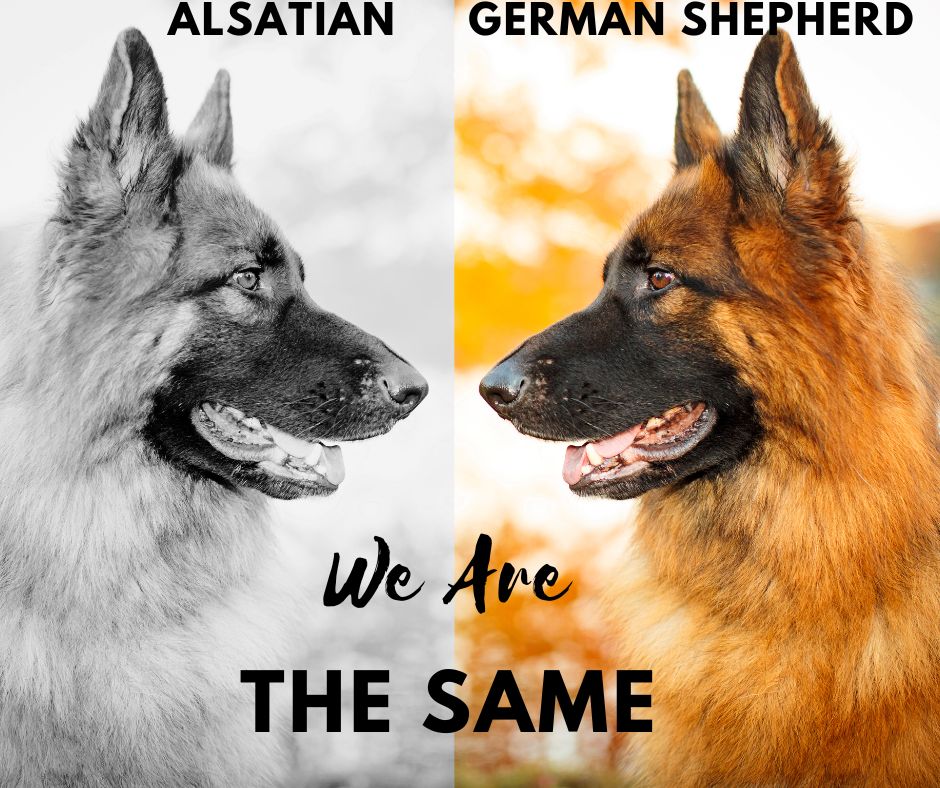
As we conclude our exploration into why German Shepherds are called Alsatians, we find ourselves reflecting on a story as multi-faceted as the breed itself. It’s a narrative that transcends the boundaries of mere terminology, delving into history, culture, emotion, and identity.
A Breed Beyond Borders: The Universal Appeal of the German Shepherd
The German Shepherd goes beyond being merely a dog breed. It represents resilience, adaptability, and the connection between humans and their canine companions. From the battlefields of World War I to the living rooms of families across the globe, this breed has left an indelible mark on our collective consciousness.
The name “Alsatian” is not merely a historical footnote; it’s a window into a time when the world grappled with the aftermath of war, seeking to redefine itself and find new ways to connect and understand. It’s a testament to the power of names, the weight they carry, and the stories they tell.
A Timeless Connection: The Enduring Legacy: Why Are German Shepherds Called Alsatians?
The story of the Alsatian’s popularity and confusion is a microcosm of the complex relationship between language, identity, and perception. It’s a reminder that names carry weight, can shape how we see and understand, and can become symbols of a time, place, and shared experience.
But beyond the history and the terminology, the story of the Alsatian is a celebration of a breed that has captured hearts and minds. A breed known for its intelligence, loyalty, courage, and versatility. A dog that has served as a soldier, a guide, a protector, and a friend.
Embracing the legacy of the German Shepherd and its alias, the Alsatian, reminds us of the complexities and beauties within our shared human experience. Stories of hope, connection, and enduring love remind us even in the shadow of conflict and confusion.
So whether you call them German Shepherds or Alsatians, whether you are a dog owner, a historian, or simply a curious reader, the tale of this remarkable breed resonates with us all. It’s a story that continues to inspire, teach, and remind us how our four-legged friends shape our lives and world.
We Want to Hear from You!
Do you have any personal stories or insights about German Shepherds? Have you ever wondered about the origin of their name or their roles throughout history? Feel free to share your thoughts, questions, and experiences by commenting below and joining the ongoing discussion.
Your perspective contributes significantly to our community, and I look forward to engaging with you. If you found this article insightful, consider sharing it with fellow dog enthusiasts and history buffs. Together, let’s celebrate the enduring legacy of this extraordinary breed.
